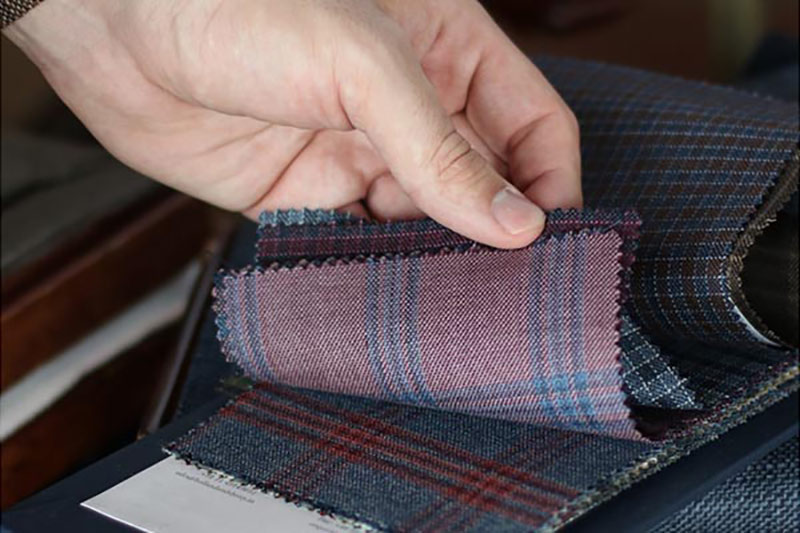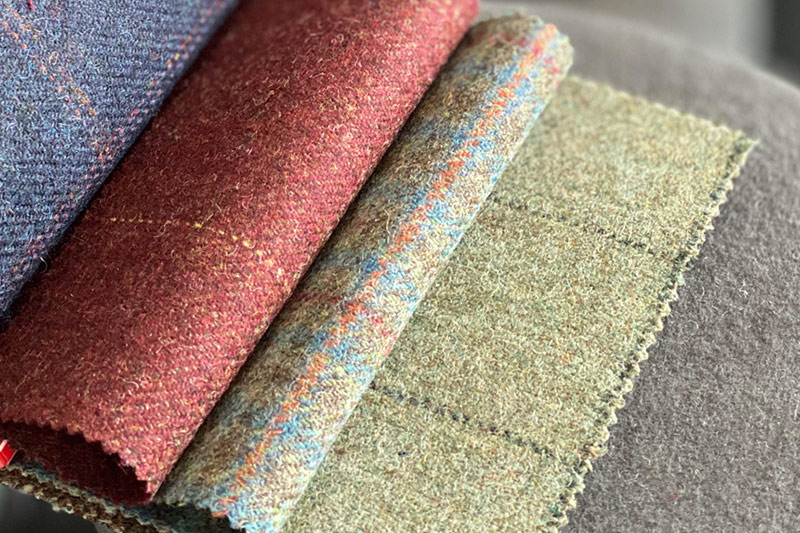
When it comes to selecting the right fabric for your wardrobe, it’s all about understanding the interplay between temperature, comfort, and – of course – style. True, “hot” is the default setting in Dubai, so the weather tends to call for lightweight fabrics most of the year. But for those of us who need to hop across different time zones and seasons, building a wardrobe that is versatile enough to tackle the crisp cool of Europe in Autumn, the Arabian heat and everything in between can be tricky.
The secret? Fabric, my friend, is key – and finding the right fabric means prioritising quality above all else.
Conquering the scorch
Let’s start with the climate many of us are most familiar with at the moment: hot and dry. Dubai’s desert climate means we rarely need to worry about staying warm, but keeping cool is nearly always a priority.
Humans have been wearing linen for, quite literally, millennia for very good reason. Made from flax fibres, this natural, lightweight fabric offers high air permeability, allowing air to flow more easily. Its relative stiffness creates space between the body and clothing for ventilation, making it the best option for extreme summer temperatures.
For still-hot, but not sweltering conditions, lightweight cottons are a good option. Cotton tends to fall closer to the body than linen, so it’s best to stick to lightweight options (around 100-150 GSM) for maximum breathability.
Wool may seem counterintuitive, but tropical wools with a lower micron count of around 20-23 are specifically designed for warmer temperatures. Made with looser, finer weaves, the fabric retains less moisture, making it a good choice for warm temperatures. Perfect for cooler summer evenings or sunny (but, crucially, air-conditioned) boardrooms.

Sweat-free survival
In stickier climes, such as summers in Southern Europe or business trips to Miami, you don’t just need fabrics that can breathe, they need to manage moisture effectively, too. When selecting a fabric for this climate, the key is to focus on moisture-wicking properties, essentially fabrics that pull sweat away from your body and disperse it.
Seersucker is a winner in this department. Once associated with the American South, it’s a top choice for anybody forced to deal with humid climates thanks to its cooling, durable and washable features. Its puckered texture keeps fabric off the skin too, allowing for more airflow and minimal cling. Silk also transports moisture well and feels cool against the skin, though direct sunlight can damage the colour.
When it comes to fabric blends, look out for technical fibres like viscose or modal, which dry faster and don’t feel weighted down when the humidity cranks up. Or, for natural fibres, linen-cotton blends are brilliant, as cotton helps with absorbency while linen keeps things nice and airy. At Ascots, we ensure that our linen and cotton blends are carefully chosen for their long-lasting comfort and structure, so you can survive even the stickiest situations with style.
Rain or shine
Apart from a good brolly, our go-to fabric for outerwear in wetter climates like London is waxed cotton. Originally made for fishermen, this tightly woven cotton fabric is treated with a layer of wax to make it water-resistant. A good barrier against water and wind, it’s also very breathable and low maintenance, making it an excellent option for rainy days.
However, if you’re dealing with drizzles rather than downpours, you may not need to venture down the waterproof route. Wool might not sound like the best option for rain, but its tightly woven construction means that it naturally repels water, while keeping you warm. In fact, it can absorb up to 30% of its weight in moisture before feeling wet.
Crisp and cool

When the temperatures dip, it’s time to switch to medium-weight fabrics that balance warmth with breathability.
For this reason, flannel is always an autumn favourite. Traditionally made from wool or cotton, its brushed surface traps warmth while remaining soft and cosy. It’s the perfect companion for those crisp autumn days when a full coat feels overkill, but a T-shirt won’t cut it.
Cashmere, known for its ultra-soft feel and superior insulation, provides warmth without bulk. Cashmere fibres are six to eight times finer than human hair, which explains why they trap warmth so well despite feeling light as a feather.
Pair lightweight favourites with these fabrics – think cotton shirts under cashmere cardigans – and you’ve got a versatile look that transitions from chilly mornings to warmer afternoons.
Braving the freeze
For those more extreme winter temperatures, insulation is the priority. If the temperatures are freezing, down-filled or quilted fabrics for outerwear are best. Down, designed to trap heat while remaining lightweight, has the highest warmth-to-weight ratio of any natural fibre, meaning it keeps you toasty without making you feel like the Michelin Man.
But for a more refined look, this is the time for pure, heavy wools (at least 300-400 GSM). The crimped fibres create air pockets, which trap body heat and act as a natural insulator. The heavier the wool, the better it will protect against the cold. A wool-blend and cashmere coat will keep you warm while staying sleek, perfect for business trips to colder destinations.
Top tip: Smart layering for climate-proof style
You could buy an entirely new outfit for every possible scenario, but that’s hardly cost or time-effective. Instead, one of the smartest strategies for dressing across different climates is mastering the art of layering. Think of your wardrobe as a modular system – mix and match lighter fabrics with heavier ones to adapt seamlessly from hot to cold. At Ascots & Chapels, we encourage building a wardrobe that combines lightweight cotton shirts with luxurious cashmere sweaters and durable wool coats – pieces that stand the test of time and transition effortlessly from season to season. With high-quality fabrics, you don’t need to worry about packing extra; you simply mix and match layers, knowing each item will hold up to the climate and years of wear.
Final thoughts
When it comes to dressing for different climates, it’s not about overhauling your wardrobe, it’s about being clever with your fabric choices. At Ascots, quality is woven into every garment, ensuring it performs perfectly in any climate. So, whether you’re braving Dubai’s desert heat, navigating a drizzly London afternoon, or bundling up for a snowy getaway, you can trust that the right fabrics will keep you comfortable and sharp.
And, gents, when in doubt, stop by Ascots – we’ll make sure you’re suited for whatever weather comes your way.
Author: Gary Sweeney
